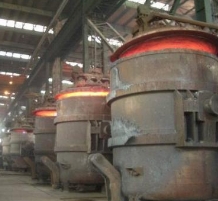- 03
- Mar
Ladle lining
Refractory materials are used under severe conditions in steelmaking production. These include higher temperatures and thermal shock caused by sudden changes in temperature. When molten steel is injected from a converter or electric arc furnace, the temperature sometimes reaches extremely high values (>1700oc). Usually, before the molten steel is injected, the temperature of the ladle lining working layer is between 800-1200, which causes stress in the lining working layer, which may cause the working layer to peel off.
It is well known that the ability of slag to react at high temperatures causes corrosion of refractory materials. The change of slag composition mainly depends on the smelting process. In the existing smelting process, it is mainly related to alkaline slag, which is most likely to react with the corundum brick lining. Currently, corundum periclase bricks or corundum spinel bricks are often used for the overall lining of ladle. When refractory castables containing spinel (10%-25%) are used as ladle linings, its ability to resist damage is particularly important, because its crystal structure helps capture a series of divalent or trivalent cations (Fe2+ Wait). Spinel-containing refractories have very low open porosity and very good mechanical properties. However, the materials added with magnesium oxide are replacing more of these materials, firstly because of cost reasons. But it is also related to its good penetration resistance.
Some researchers believe that these good performances are related to the high density of the material and the large unit surface area. The formation of spinel is accompanied by the development of microscopic pores in the refractory matrix. Lime or slag can react with alumina and form calcium hexaaluminate, which causes expansion, causing some microscopic pores to be closed.
The preheating of the permanent layer of the ladle lining is an important factor that affects its performance. It is also a very important stage. At this time, any deviation from the ideal heating curve will cause greater stress in the lining, sometimes The occurrence of a burst layer exerts a mechanical action, which is the most dangerous factor during the use of the lining. The sequence of processing the molten steel and thermal cycling during the use of the ladle can also cause certain linings to become fragile and peel off.

